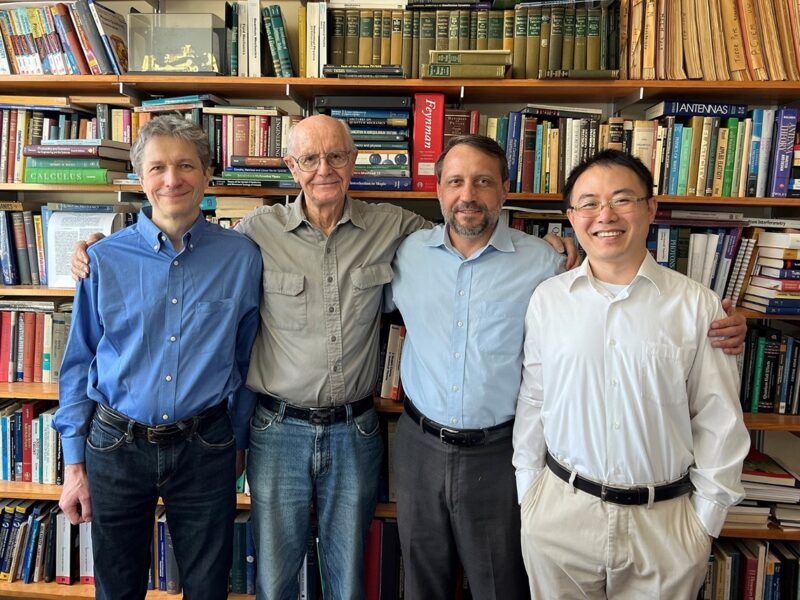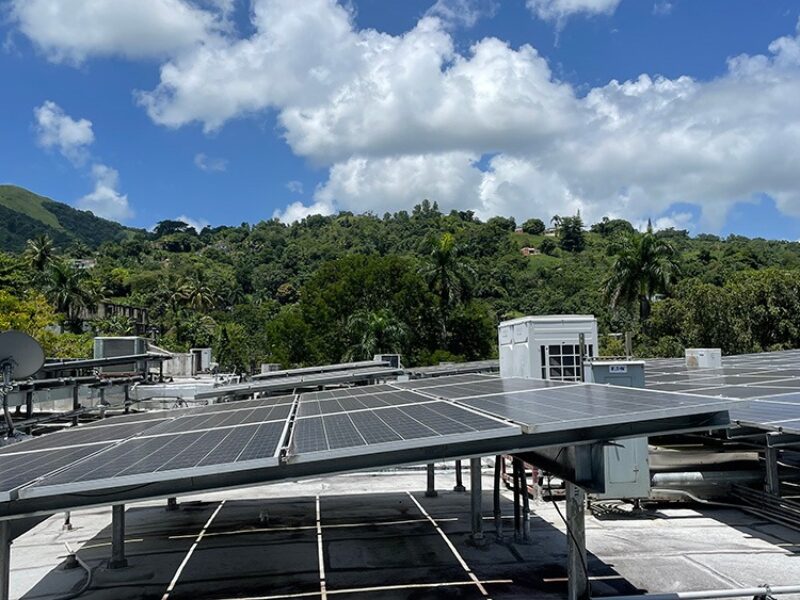Texas A&M Leads Project Advancing Cybersecurity, Energy Efficiency In Smart Buildings

The United States Department of Energy (DOE) is supporting a Texas A&M University College of Engineering project to improve the cybersecurity and energy efficiency of commercial buildings.
The Securing Grid-Interactive Efficient Buildings through Cyber Defense and Resilient System project, led by Zheng O’Neill, received $3.5 million from the DOE’s Building Technologies Office to research, develop and demonstrate a real-time advanced building-resilient platform through multi-layer prevention and adaption mechanisms.
Texas A&M’s partners on the three-year project include Raytheon Technologies Research Center, Drexel University, Arizona State University, Pacific Northwestern National Laboratory and Northwestern University.
As part of the project, a hardware-in-the-loop – a simulation technique that is used in the development and testing of complex real-time embedded systems – and a local testbed in Texas will be developed to help explore and demonstrate potential approaches to cybersecurity and energy efficiency in a real physical space both on the Texas A&M campus and off. The team is currently searching for potential building partners to deploy their cyber defense and resilient system (CYDRES) for limited field testing once in the third year of the project.
“The proposed CYDRES system will accurately identify cyber threats in real-time and offer immediate defense against malicious network activity,” O’Neill said. “In addition, the fault detection, diagnostics, and prognosis and cyber-resilient control scheme will enhance grid-interactive efficient building tolerance to both cyber-related and physical faults while maximizing the potential energy savings and load flexibility and maintaining occupant satisfaction. CYDRES will be prototyped and tested in a hardware-in-the-loop and real building environment. The resulting test data will be used to inform the building community and support the technology transfer to the industry.”
O’Neill, associate professor and J. Mike Walker ’66 Faculty Fellow II in the J. Mike Walker ’66 Department of Mechanical Engineering, said current building automation systems (BAS) are designed and operated with little consideration of cybersecurity challenges, leaving many building systems vulnerable to attack.
This is of special concern for emerging grid-interactive efficient buildings (GEB), which if attacked, could result in especially adverse consequences ranging from energy waste and occupant discomfort to equipment downtime and disruption of grid operations.
“Current physical behavior-based anomaly detection methods employed by building automation systems fail to differentiate cyberattacks from equipment or operational faults,” O’Neill said. “Such distinction is critical in ensuring the appropriate automated mitigation, via control response, of cyber threats and providing actionable recommendations to facility managers.”
A special initiative of the DOE, GEBs are expected to improve the amount and timing of energy use, making an overall building more energy efficient by outfitting them with next-generation sensors, controls, connectivity and communication in hopes of giving occupants more control in managing comfort and productivity while simultaneously reducing energy costs. The DOE also hopes smarter buildings can provide benefits to the electric grid, including enhanced reliability and resilience.
“The project will streamline the cutting-edge network analyzer and control algorithms for cybersecurity into commercial building automation systems products and expedite the transfer of the latest technologies to benefit building owners, building automation companies and utility companies,” O’Neill said. “The market size of the intended end user of this technology is all commercial buildings with BAS in the U.S.”
O’Neill said the primary annual energy savings anticipated across the country by 2030 is approximately 0.86 quads – a unit of energy equal to 1 quadrillion British thermal units, which is often used to describe national and world energy resources – according to an estimation using DOE Scout tool. In 2019, the U.S. was estimated to consume a total of 100.2 quads, according to the U.S. Energy Information Administration.
By the project’s conclusion, O’Neill said she expects to see CYDRES effectively monitoring, detecting and responding to cyberattacks and physical system faults. The DOE’s Building Technologies Office has a roadmap to advance the role that GEBs can play in modernizing the power grid. The security, intelligence and resilience of the building automation systems directly affect the performance and market adoption of GEB technologies.
In the same DOE program, O’Neill is also participating another GEB project led by Drexel University called “Hardware-in-the-Loop Laboratory Performance Verification of Flexible Building Equipment in a Typical Commercial Building.”
In addition to the primary mission of the project, O’Neill hopes to see a multidisciplinary collaboration on the project with researchers from around the Texas A&M campus in further pursuing research in the area of smart buildings and cities.
This article by Steve Kuhlmann originally appeared on the College of Engineering website.





